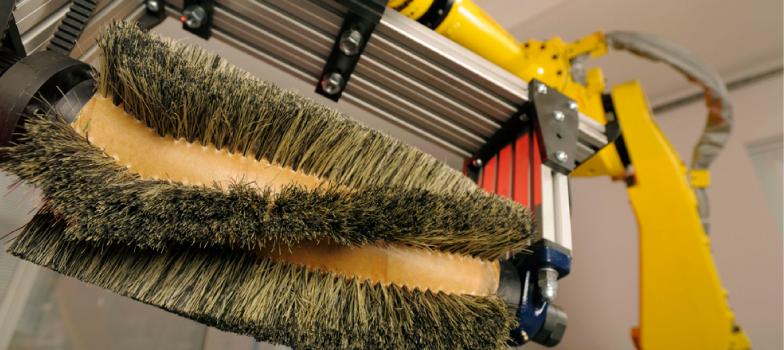Technical surfaces are constantly striving to research, engineer and develop new machinery and techniques. This is vital in a world where manufacturers are constantly improving surfaces with the introduction of next generation and hybrid systems. Whatever type of surface you play on – sand filled, sand dressed, water-based, rubber infill or new hybrid systems – pitch performance and ball roll is paramount. It is therefore critical that the correct maintenance machinery and techniques are used remembering that each surface and system will have its own inherent problems.
Problems encountered by synthetic surfaces are wide ranging. Some are generic and common to all types of surface exposed to the elements with general dirt and debris being trafficked onto the pitch. Other instances can be quite unique and specific. Changes to pitch designs and carpet manufacture can represent a whole new set of problems and for that reason we are constantly carrying our research into new techniques and machinery. Climate too has had a large bearing with shifts in seasons and extremes in weather having a major impact on surfaces.
Jonathan Gunn, Technical Director.
Having been maintaining pitches for over 15 years, Technical Surfaces has built up a wealth of knowledge. Our annual pitch assessment and safety inspection reports allow us to track the progress of a facility and using experience predict expected life cycles of a surface and take appropriate action should anything fall in or out of the expected tolerances. As well as using this data for ourselves and our clients, we have happily let other institutions and academic establishments have access to the information to help advance studies on sports surfaces and how they react to use and maintenance techniques. One such study was recently carried out by Cranfield University. The doctorate, which took 4 years to complete, was focused on developing a set of guidelines for maintaining synthetic turf. The results, which can be downloaded from the university’s website, confirmed to a large extent our own findings and helped to reinforce the need to adopt a focused maintenance plan. The fast evolving nature of today’s surfaces means it’s even more important for us, at Technical Surfaces, to continue to adopt a forward thinking approach to maintenance. It is this philosophy of ‘maintaining standards’ that has recently led us to enlist the help of Loughborough University in undertaking a study on wear rates of surfaces. Technical Surfaces not only use a vast array of machinery but also a large selection of different types of brush dependent on the carpet, system and climatic conditions. With some of the surfaces we currently maintain now over 20 years old, knowledge of the effects various brushes have on different fibre types is paramount to ensure that little or no damage ever occurs to a pitch surface.





